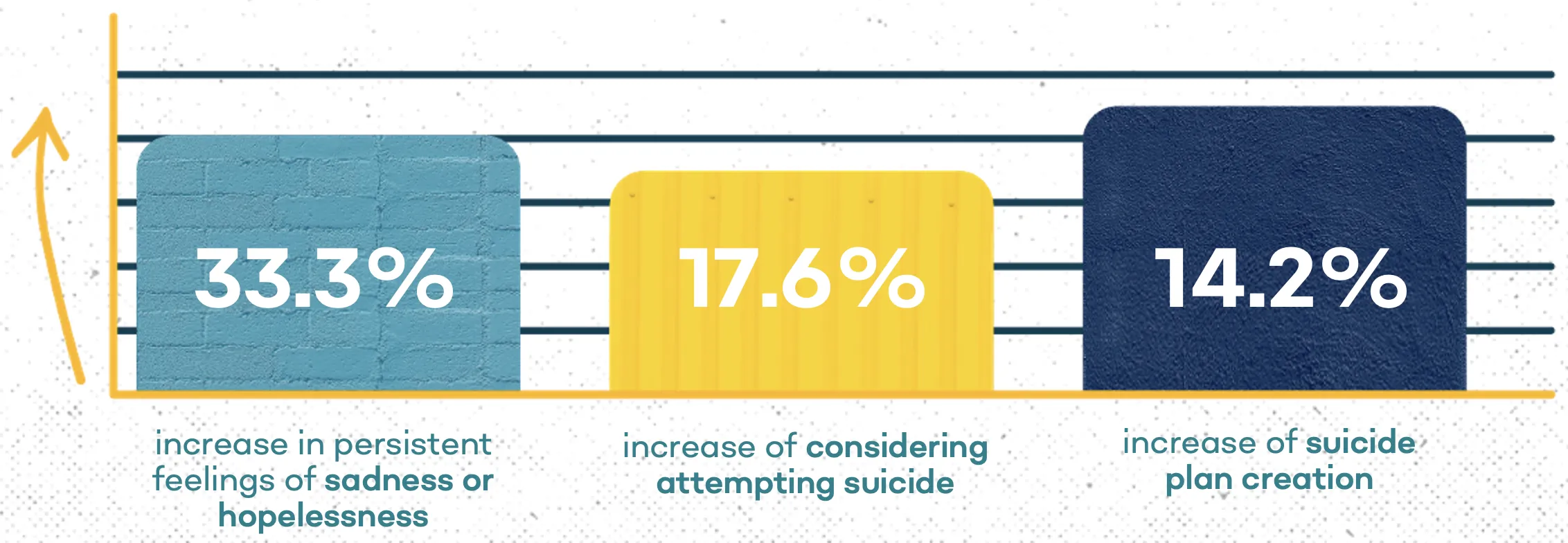A Research Based Approach to Improving Mental Health
It’s no secret: numerous studies and headlines highlight an alarming uptick in mental health challenges and suicide attempts or deaths amongst teens in recent decades. Leading experts, including the Surgeon General and the CDC, affirm this and call for urgent action. But stigma associated with mental health challenges continues to keep teens from sharing their struggles – and worse, prevents them from seeking help.
Zero Reasons Why® is built on addressing two key factors: reducing mental health stigma and increasing help-seeking behavior. When stigma is removed, struggling teens are more likely to seek help. As help-seeking behavior increases, the hopeful result is a reduction in teen suicide.
Suicide Prevention Through Storytelling
Stories have the power to remove mental health stigma.
Sharing personal narratives is a research-backed and evidence-based approach to address and even treat mental health challenges. The Zero Reasons Why® Campaign is not treatment, but it uses the same concept – leveraging the known benefits of reading stories about overcoming mental health challenges – to elevate the topic of mental health.
A 2022 study in the Journal of Consulting and Clinical Psychology found that individuals with suicidal thoughts who read others’ stories of working through suicidal ideation increased “feelings of perceived shared experience and optimism” and “reported lower desire to die.”
Bringing stories of lived experience or encouragement to the forefront solidifies the topic as important, relevant, timely – and something okay to talk about. The conversation becomes proactive and feelings of optimism and reducing stigma can be felt before a teen encounters crisis.
Major mental health organizations promote this same idea. The National Suicide Prevention Lifeline (988) storytelling guide says, “By sharing a wide variety of mental health experiences and the myriad ways in which we cope with crisis, we can help others find hope and meaning, and recognize ourselves in each other’s stories.”
Together, we’re opening the dialogue for real change — with real stories.

Additional mental health research that supports our methodology
- Mental Health Stories Can Shape Young People’s Wellbeing
- The Power of Reading First-Hand Stories in Reducing Suicidal Thoughts
- Challenging the Stigma of Mental Illness Through Creative Storytelling
- Reducing Stigma in Mental Health Through Digital Storytelling
- Effect of Narrative News on Empathy for Stigmatized Groups
- Mental Illness and Peer Support through Social Media


